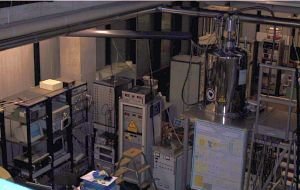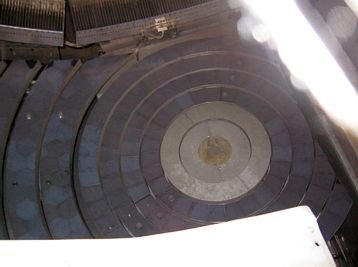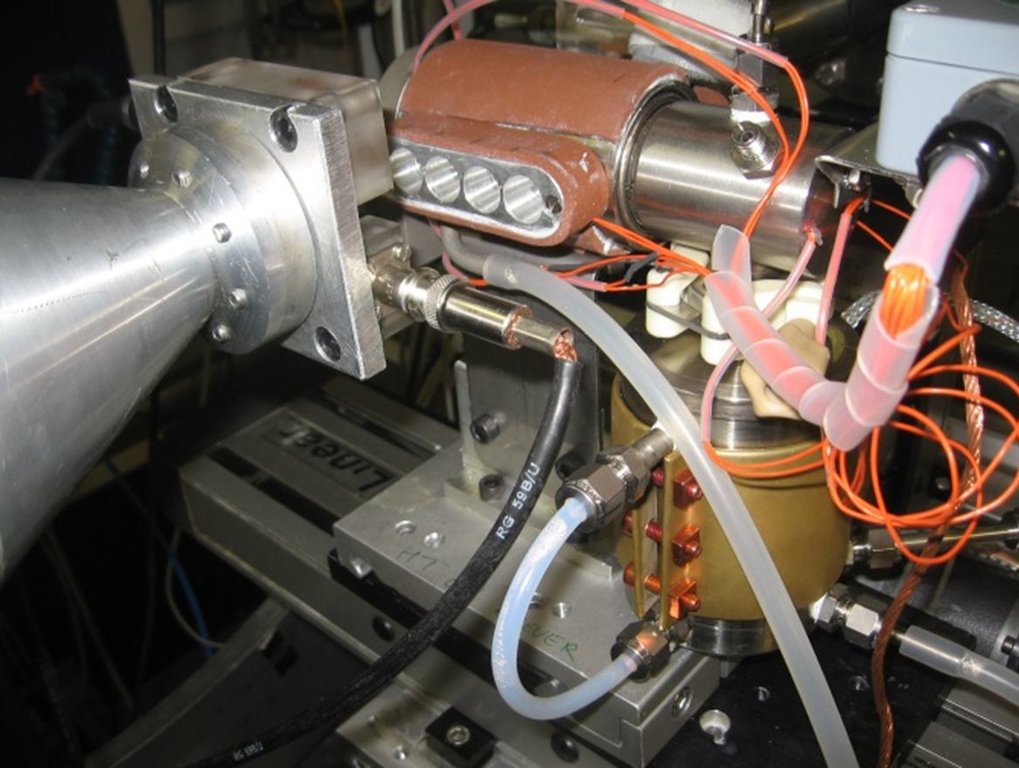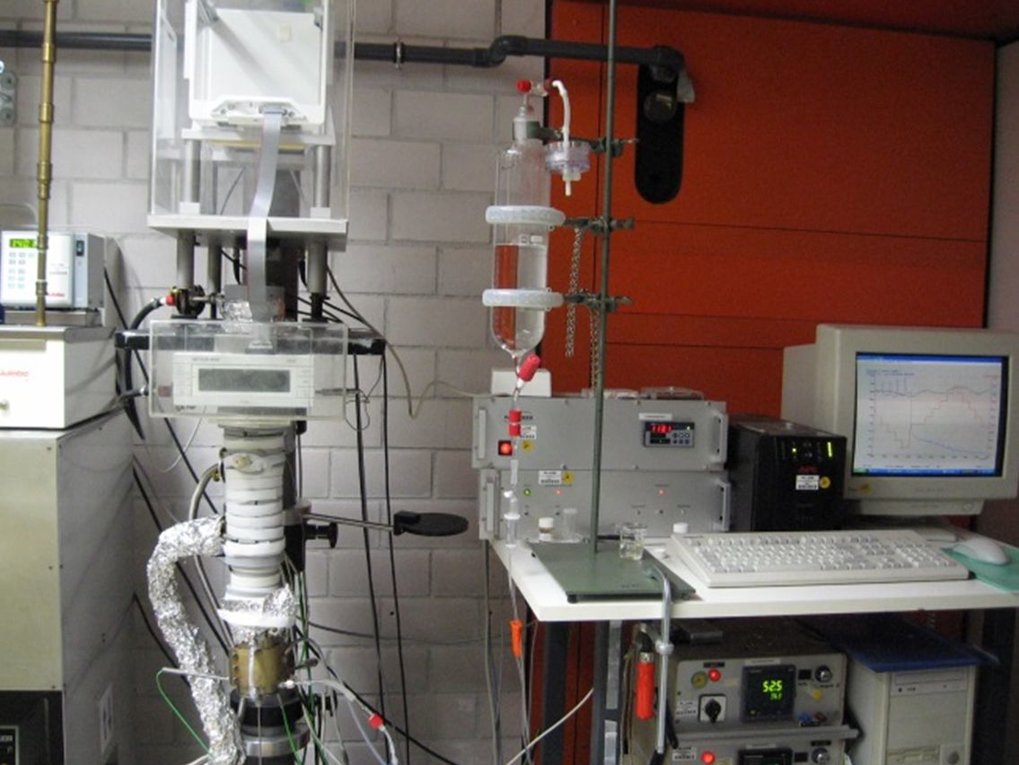Our research strategies rely on the availability of diverse experimental and simulation techniques. Inorganic samples can be prepared at high temperature and controlled atmosphere or under mild conditions (chimie douce) in sol/gel processes, polymers by traditional organic synthesis. Standard thermal analysis (TGA, DTA, DSC, Dilatometry) and spectroscopic techniques (IR, Raman, x-ray diffractommetry) are available as well as methods for ceramics characterization (BET, Zeta-potential). Since the heart of our research is the investigation of transport processes, all standard electrochemical methods (e.g. impedance spectroscopy, cyclo-voltammetry) for a wide range of frequencies/times are available.
Apart from such commonly used techniques, we have developed some specialties which are adapted to our particular research:
NMR in high magnetic field gradients 
We have established NMR spectroscopy in high magnetic field gradients (5000 G/cm) as a versatile tool in "Solid State Ionics". PFG-NMR allows for the site selective determination of tracer-diffusion coefficients while electrophoretic (E)-NMR measures the drift velocity of charged and uncharged species in electric fields.
Quasi elastic neutron scattering 
While such methods yield long range transport coefficients which are directly compared to dc-conductivity data, quasi elastic neutron scattering(QENS, collaboration with B. Frick, ILL) provides dynamical information on the molecular scale. The covered range of S(q,ω) allows for the verification of the results of ab initio molecular dynamics simulations with CPMD and CP2K being the mostly employed codes. The calculations are mostly run on an IBM Power6 machine (RZ Garching) and a home-based Linux Infiniband cluster (in house collaboration with G. Bester ). recent poster (PDF)
Small angle x-ray scattering at high T and RH 
Since there is a strong relation between the transport within ionomers and their microstructure, we also use Small Angle X-ray Scattering (SAXS), the standard tool to investigate the microstructure of ionomers and polyelectrolytes. Recently, we have developed a measuring cell which allows to take SAXS spectra in a wide temperature range (< 150°C) as a function of relative humidity. In this way, conditions close to those in a running fuel cell are accessible (collaboration with G. Portale, BM26 at ESRF)
Termogravimetric analysis in closed recipients with magnetic coupling 
Under the same conditions, thermogravimetric analysis (TGA) yield the relation between relative humidity (RH, chemical potential of water) and water uptake. The measurements can be extended to high temperature and relative humidity, because the sample is located in a closed chamber and physically detached from the balance: the coupling is magnetically through the glass wall of the recipient.